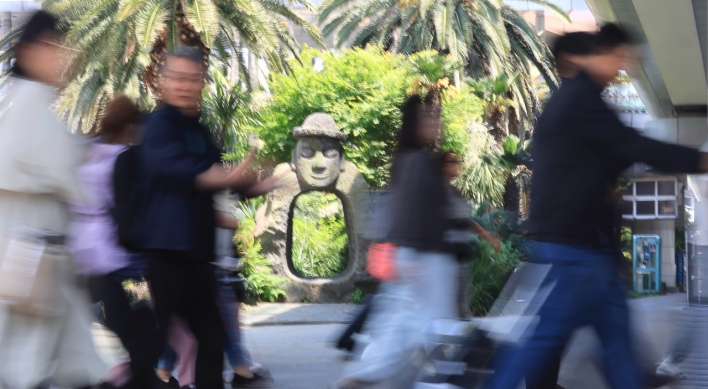
A mountain fortress southeast of Seoul is highly likely to make it onto UNESCO’s list of world heritage sites, the government said Tuesday.
An experts’ panel under the UNESCO World Heritage Committee that deliberates on new additions to the list has recommended Namhansanseong Fortress for inscription in its recent report, according to the Cultural Heritage Administration.
A final decision is due in June when the committee meets in Qatar, but it seldom overturns recommendations from the International Council on Monuments and Sites, CHA officials said.
“Namhansanseong now awaits only the final nod from the World Heritage Committee to be inscribed on the list,” the agency said in a press release.
If approved, the fortress will be Korea’s 11th item on the much-coveted, list which includes Changdeokgung Palace in Seoul, the ancient city of Gyeongju and the volcanic island of Jejudo. The latest to win the world heritage title in Korea were the Hahoe and Yangdong villages in North Gyeongsang Province, which were jointly designated in August 2010.
Korea decided to apply for UNESCO status for the fortress in 2011 and submitted an application in January last year. A team of ICOMOS experts came to Korea last September for an on-site inspection.
Constructed along the steep ridge of Mount Namhansan, which spreads over three cities in Gyeonggi Province ― Gwangju, Seongnam and Hanam ― the ancient mountain fortification served as a strategic defense wall from the seventh century to the Joseon era (1392-1910).
Inside the 11.76-kilometer fortified stone wall are a royal palace complex, a large village and a number of temples, as it was built to serve as the king’s refuge and temporary capital during war.
In fact, King Injo of Joseon took shelter there for 47 days until he finally surrendered to the Qing Emperor Taizong during the second invasion of the Manchus, from 1636-1637.
The fortress is designated National Historic Site No. 57.
By Lee Sun-young (milaya@heraldcorp.com)
An experts’ panel under the UNESCO World Heritage Committee that deliberates on new additions to the list has recommended Namhansanseong Fortress for inscription in its recent report, according to the Cultural Heritage Administration.
A final decision is due in June when the committee meets in Qatar, but it seldom overturns recommendations from the International Council on Monuments and Sites, CHA officials said.
“Namhansanseong now awaits only the final nod from the World Heritage Committee to be inscribed on the list,” the agency said in a press release.
If approved, the fortress will be Korea’s 11th item on the much-coveted, list which includes Changdeokgung Palace in Seoul, the ancient city of Gyeongju and the volcanic island of Jejudo. The latest to win the world heritage title in Korea were the Hahoe and Yangdong villages in North Gyeongsang Province, which were jointly designated in August 2010.
Korea decided to apply for UNESCO status for the fortress in 2011 and submitted an application in January last year. A team of ICOMOS experts came to Korea last September for an on-site inspection.
Constructed along the steep ridge of Mount Namhansan, which spreads over three cities in Gyeonggi Province ― Gwangju, Seongnam and Hanam ― the ancient mountain fortification served as a strategic defense wall from the seventh century to the Joseon era (1392-1910).
Inside the 11.76-kilometer fortified stone wall are a royal palace complex, a large village and a number of temples, as it was built to serve as the king’s refuge and temporary capital during war.
In fact, King Injo of Joseon took shelter there for 47 days until he finally surrendered to the Qing Emperor Taizong during the second invasion of the Manchus, from 1636-1637.
The fortress is designated National Historic Site No. 57.
By Lee Sun-young (milaya@heraldcorp.com)
-
Articles by Korea Herald








![[Weekender] Korean psyche untangled: Musok](http://res.heraldm.com/phpwas/restmb_idxmake.php?idx=644&simg=/content/image/2024/05/02/20240502050841_0.jpg&u=)









![[Eye Interview] 'If you live to 100, you might as well be happy,' says 88-year-old bestselling essayist](http://res.heraldm.com/phpwas/restmb_idxmake.php?idx=652&simg=/content/image/2024/05/03/20240503050674_0.jpg&u=)
